As Black History Month comes to a close, we would like to take a moment to shine a light on 10 iconic African American inventors and scientists who have helped shape innovation in the United States.
This slideshow requires JavaScript.

Lonnie G. Johnson
The Super Soaker, Johnson Thermoelectric Energy Converter
Lonnie G. Johnson is most known for his invention of the Super Soaker®, but he is not a toymaker by trade. Johnson is a nuclear engineer who worked for NASA and the U.S. Air Force.
Johnson invented the Super Soaker® while working on a heat pump invention. When he saw water shoot across the room from a hose he had attached to a sink, he thought it would be “neat to develop a high-pressure water gun.”
Johnson also knew that if he could create something simple that anyone could understand and appreciate, the revenue from that invention could fund his future passions of scientific innovation and entrepreneurship. It took Johnson more than seven years to bring his water gun prototype to market, but the Super Soaker ended up generating more than $1 billion in sales.
Lonnie G. Johnson has received and over 133 patents and that number continues to rise. One of his most notable inventions is the Johnson Thermoelectric Energy Converter which converts heat directly into electricity. He sees the invention as a path to low-cost solar power.
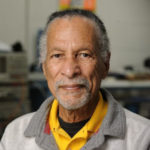
James E. West
Elecret Microphone
James West was inducted into the National Inventors Hall of Fame in 1999 for his contributions to microphone technology. Over 90 percent of today’s microphones are electret microphones and are used in items such as cell phones, telephones, laptops, baby monitors, sound and music recording equipment, and hearing aids.
West has received over 200 U.S. and foreign patents. He is also an advocate for science education, particularly among minority students.
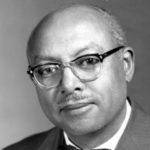
W. Lincoln Hawkins
Polymer Cable Sheath
W. Lincoln Hawkins was inducted into the National Inventors Hall of Fame in 2010 for his contributions to creating polymer cable sheath.
Before the 1940s, lead coating was used to insulate telephone cables, which made the costs of building and maintaining telephone systems expensive and too heavy for practical use. Lead is also an environmental toxin.
Hawkin’s team found a way to stabilize polyethylene and created a plastic cable insulation that could withstand changes in temperature and other environmental factors. These contributions have made universal telephone service possible.

Lisa Gelobter
Shockwave Flash, Animated GIFs
Lisa Gelobter is a computer scientist, technologist, and was the Chief Digital Service Officer for the United States Department of Education from 2015 to 2017. She is known for her contributions to Shockwave Flash, Hulu, animated GIFs, and tEQuitable, an independent, confidential platform that addresses issues of bias, discrimination, and harassment in the workplace.

Mark Dean
Peripherals
Mark Dean was inducted into the National Inventors Hall of Fame in 1997 for his contributions to peripherals. Dean’s inventions paved the way for growth in the IT industry by allowing use of plug-in subsystems and peripherals like disk drives, video gear, speakers, and scanners. He is also known for co-inventing the personal computer and the color PC monitor.
Dean holds over 20 patents, among them, are three of IBM’s original nine PC patents.

Dr. Patricia Bath
The Laserphaco Probe
In 1981, Dr. Patricia Bath invented the Laserphaco Probe, a tool used during eye surgery to correct cataracts. Bath’s technology has helped restore or improve vision in patients around the world. She was also the first African American to complete a residency in ophthalmology and the first African American female doctor to secure a medical patent. Bath also co-founded the American Institute for the Prevention of Blindness and advocates for eyesight as a basic human right.
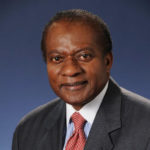
Victor B. Lawrence
Signal Processing in Telecommunications
Victor Lawrence was inducted into the National Inventors Hall of Fame in 2016 for his contributions in improving transmission of the modern internet and making high-speed connections more accessible.
Some of his work includes advancing data encoding and transmission, modem technology, silicon chip design, ATM switching and protocols, DSL, speech and audio coding, and digital video. Lawrence is an advocate for bringing internet access to the world’s poorest countries. His efforts include laying fiber optic cable along the west coast of Africa.
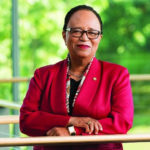
Dr. Shirley Jackson
Touch-Tone Telephone, Caller ID, Fiber-Optic Cable
Dr. Shirley Jackson was the first African-American woman to earn a doctorate in nuclear physics at Massachusetts Institute of Technology. Among her more famous inventions like the touch-tone telephone, caller ID and the fiber-optic cable, Jackson’s experiments with theoretical physics paved the way for numerous other telecommunication developments including the portable fax and call waiting.
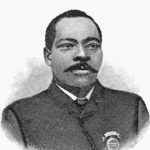
Granville Woods
Railway Telegraphy
Granville Woods was inducted to the National Inventors Hall of Fame in 2006 for his development of the railroad telegraph, a device that transmitted messages between moving trains through means of static electricity. Prior to Woods’ invention of the induction telegraph, moving trains were unable to communicate with each other or with rail stations.
Woods held over 60 patents throughout his life including an overhead electric conducting system for rail and trolley cars and a third rail that carries electricity via electromagnetic switches, which is still widely used today. Woods also contributed significantly to the railroad car automatic air brake.
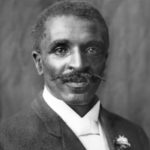
George Washington Carver
Peanut Products, Crop-Rotation Method
George Washington Carver was inducted to the National Inventors Hall of Fame in 1990 for his inventions of peanut products and is also known for popularizing the crop-rotation method. Carver was an agricultural chemist who encouraged planting peanuts and sweet potatoes in between cotton planting seasons as a way to add nutrients back into the soil that had been previously stripped by growing cotton.
Carver is widely known for developing over 325 uses for peanuts. At the end of his life, George Washington Carver contributed his life savings to establish a research institute at Tuskegee Institute.
